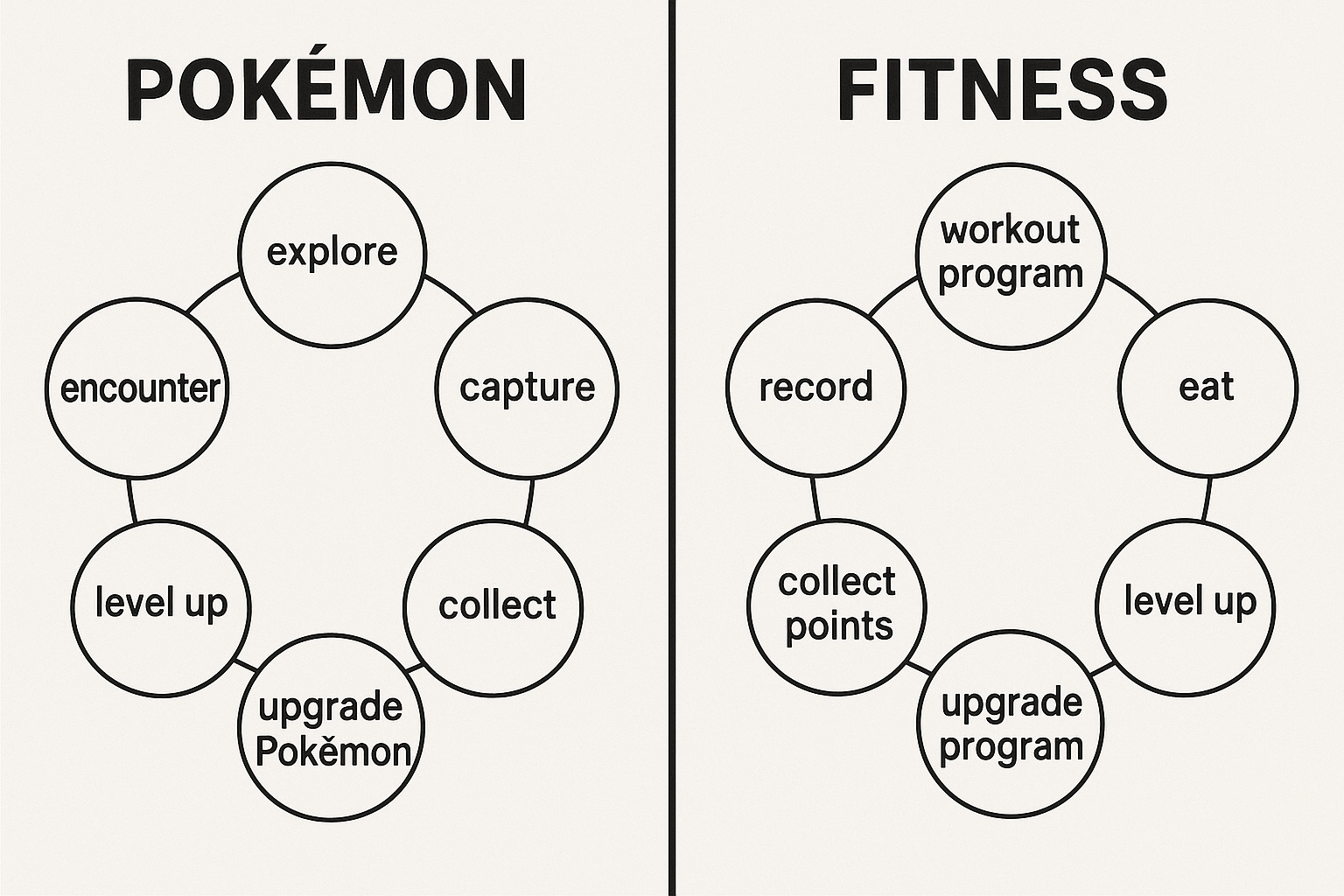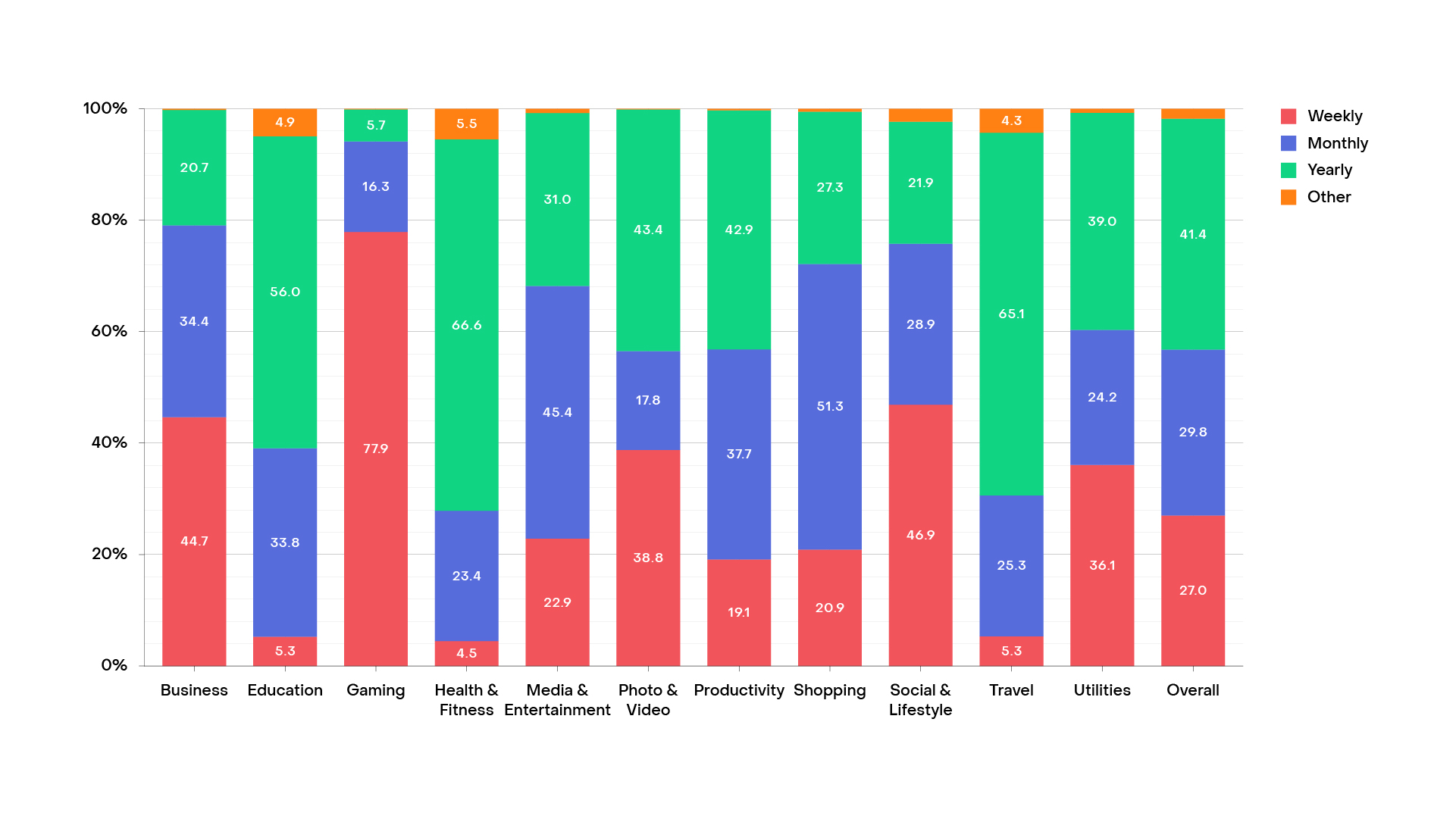Free Player Retention Guide Get Now

Key Takeaways: Wellness and fitness apps can significantly boost user engagement and revenue by adopting strategies from the highly profitable free-to-play gaming model:
Consumer wellness and fitness apps have rapidly become an integral part of our daily routines, helping us develop healthier habits and lifestyles. However, making money from these apps remains challenging, leaving developers searching for better ways to generate revenue. Here are some of the recent stats:
Surprisingly, one area worth looking into for inspiration is free-to-play (F2P) games, an industry known for its highly profitable and engaging models.
Free-to-play games thrive on a straightforward yet effective idea: offer basic functionality for free, then encourage users to invest more through enhanced experiences, in-app purchases, ads, and subscription plans. Wellness and fitness apps have much to gain by adopting similar strategies, helping to boost user engagement and financial sustainability.
Successful F2P games offer personalized experiences tailored to each player's interests and abilities. They monitor player behavior closely and adapt gameplay accordingly, making each interaction feel unique and engaging. Wellness apps can follow this lead by adjusting workout routines, nutritional advice, or mindfulness practices based on users’ progress, goals, and feedback. This creates a feeling of personal growth and keeps users coming back regularly.
Free-to-play games keep players hooked by setting clear objectives accompanied by immediate rewards. This goal-oriented approach motivates players to keep returning. Fitness apps can benefit by establishing achievable daily or weekly goals, providing rewards such as badges, discounts, or special recognition. Tangible incentives reinforce positive behaviors and encourage users to remain committed.

Micro transactions are small, frequent payments made by users in exchange for special features, cosmetic upgrades, or added convenience. Fitness apps can similarly offer optional premium content like personalized coaching sessions, specialized workouts, or advanced analytics at affordable prices. This approach allows users to choose how much they invest while generating consistent revenue.
One major strength of popular F2P games is their ability to foster communities around shared interests and friendly competition. Wellness apps can greatly improve user retention by integrating community elements such as group challenges, leaderboards, and support forums. Users are more likely to stick with an app if they feel part of a community that motivates and supports them.
F2P games effectively use gamification—incorporating elements like rewards, leaderboards, and special events—to encourage regular user participation. Wellness apps can adopt these same principles to promote consistent behavior. Features such as streak counters, leveling up systems, and limited-time challenges can leverage behavioral psychology to maintain user engagement.
Subscriptions are another valuable revenue stream common in successful F2P games, providing users with premium benefits while keeping the core experience free. Wellness apps can adopt similar freemium models, offering basic functions for free and providing subscribers with extras such as detailed analytics, customized workout plans, and exclusive content. This approach ensures steady income without discouraging new users from trying the app.

Gaming companies use detailed analytics to constantly refine their products, improve user experiences, and maximize profitability. Wellness and fitness apps can similarly harness data to better understand user behavior, preferences, and challenges. Using these insights, developers can optimize their app’s offerings, deliver targeted content, and address user needs effectively, improving both user satisfaction and profitability.
Free-to-play games regularly update their content, providing players with new events, challenges, and features to prevent boredom. Fitness and wellness apps can take a similar approach by consistently adding fresh workouts, dietary advice, and motivational content. Seasonal or thematic challenges and virtual fitness events can keep the app experience lively and engaging, showing users that the app continues to evolve.
Free-to-play games have refined their methods of user engagement and revenue generation to remarkable success. Wellness and fitness apps can learn much from these strategies, especially in areas like personalized experiences, rewarding user progress, microtransactions, community-building, gamification, subscription models, data-driven improvements, and regular content updates. By embracing these approaches, wellness apps can not only keep users engaged but also build sustainable, profitable businesses.
Sonamine has been a working in games since 2009. If you want to optimize your game or app, please contact us.
Credits
"Fitness" by hang_in_there is licensed under CC BY 2.0.
For a limited time until December 2025, Sonamine is offering a 60 day money back guarantee to OneSignal customers. Come experience the ease and simplicity of the First Time Spender Nudge package and watch your conversions soar.
For a limited time until December 2025, Sonamine is offering a 60 day money back guarantee to OneSignal customers. Come experience the ease and simplicity of the First Time Spender Nudge package and watch your conversions soar.